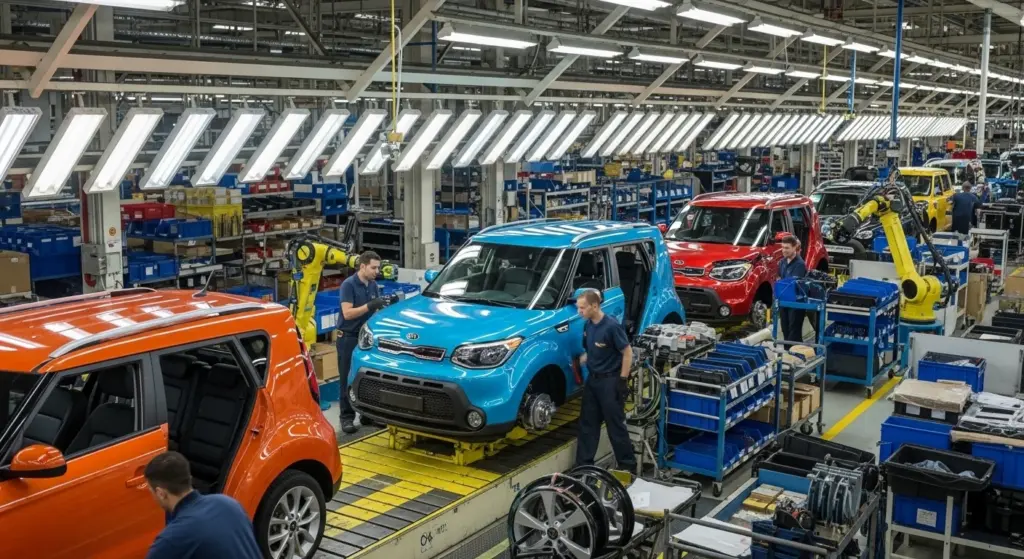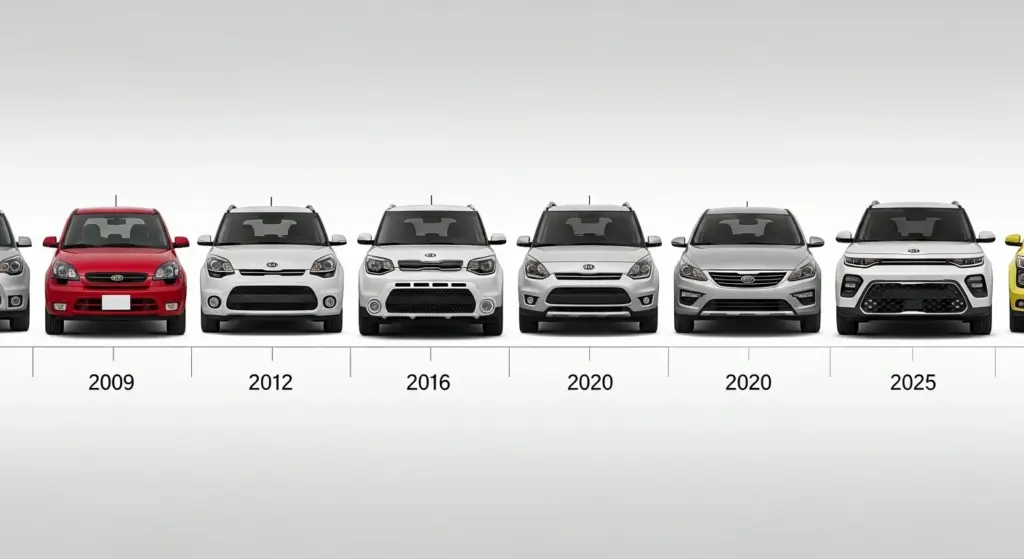In a surprising pivot, Chevrolet has revived one of its most iconic affordable EVs — the 2027 Bolt — after discontinuing production in 2023. This relaunch arrives at a moment when EV buyers are demanding value, practicality, and reliable charging infrastructure.
Why this matters in the U.S.: as many federal incentives fade and competition tightens, a sub-$30,000 EV with solid range could shift the balance. Chevy’s move signals its intent to recapture ground in the entry EV space.
With teasing, specs, and platform changes now public, the 2027 Bolt is poised to become a key battleground in the EV affordability race.
What Chevrolet Has Revealed
Design & Exterior Updates
The new Bolt mostly retains the crossover silhouette reminiscent of the old Bolt EUV, but with refinements. Vertical LED daytime running lights, sharper front fascia, linked headlights, and restyled taillights are among the visual tweaks.
The body is slightly more sculpted, with blacked-out trim elements, new wheel designs, and refreshed bumper styling. These changes are evolutionary, not revolutionary.
Range, Battery & Charging
Chevy estimates 255 miles of range using a 65 kWh lithium-iron-phosphate (LFP) battery pack. Charging speed is now rated at 150 kW peak, cutting 10-80% time to around 26 minutes.
One major change: the Bolt now uses a native NACS (Tesla) charging port, enabling direct access to Tesla Superchargers.
Other features include vehicle-to-home (V2H) capability and improved plug-and-charge support (initially with EVgo).
Powertrain, Performance & Tech
Safety and driver assistance include over 20 standard features, and optional Super Cruise with hands-free lane changes is offered.
Specs & Real-World Impact

| Feature | 2027 Bolt Spec | Real-Life Implication |
|---|---|---|
| Battery | 65 kWh LFP | Robust chemistry with lower cost and safety |
| Range | ~255 miles | Suitable for daily use and moderate trips |
| Charging | 150 kW (10–80% in ~26 min) | Faster on long drives vs previous generation |
| Motor | 210 hp, FWD | Adequate performance for highway merging |
| Charging Port | NACS | Seamless access to Tesla Superchargers |
| Price | $29,990 (LT) / $28,995 base later | Among lowest priced for range |
| Production | Kansas City plant | U.S. assembly, limited run |
In real conditions, expect EPA range slightly below 255 miles (perhaps 230–250 mi) depending on climate and driving style. The jump in charging power and NACS compatibility notably improves usability on long trips vs past Bolt models.
Also take a look at this topic: Audi Drops the Four-Cylinder: 2026 A6 Becomes All-V6 in U.S
How the 2027 Bolt Stacks Against Rivals & Legacy Models

Versus the Original/Discontinued Bolt
The earlier Bolt EV/EUV used slower charging (50 kW max) and CCS connectors. Its discontinued status left a gap in the affordable EV space. The new version addresses those weaknesses.
Against Other Affordable EVs
At its sub-$30K price, the Bolt competes with models like the Nissan Leaf, Hyundai Kona Electric, and lower-trim EVs. But with Tesla Supercharger access and improved charging, it may offer better distance usability.
The new Bolt’s value positioning comes even as GM scales back some EV ambitions and absorbing heavy EV costs.
Market Reactions & Strategy Risks
- Analysts note GM is taking large write-downs ($1.6B) as it rebalances EV plans.
- The relaunch is seen as a strategic necessity: to keep an EV presence at the low end.
- The “limited run” label hints that the model may have a short lifecycle, so buyers should act early.
- Social and enthusiast reaction tends to be cautiously optimistic: people are eager for an affordable EV, but wary from past Bolt issues.
Also take a look at this topic: W230 Stays in Kawasaki’s 2026 Range: A Retro Star with Fresh Look
Conclusion
The 2027 Chevrolet Bolt relaunch is both bold and calculated. With sub-$30K pricing, 255 miles of range, Tesla Supercharger access via NACS, and upgraded tech, it re-enters the EV entry class with serious credentials.
That said, its success depends on execution, battery reliability, dealer support, and how long Chevrolet maintains production. For U.S. EV buyers seeking affordability, this may well be one of the most compelling options in years.
